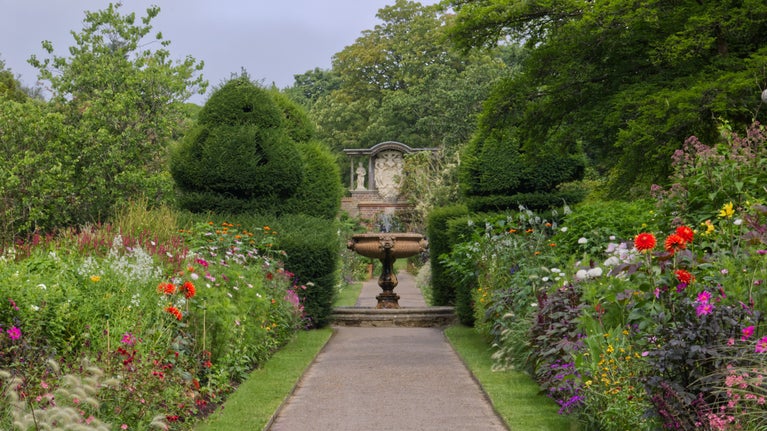
Gardens and landscapes
Find out more about the historical landscapes that the talented garden teams work hard to conserve at the places you love to visit.

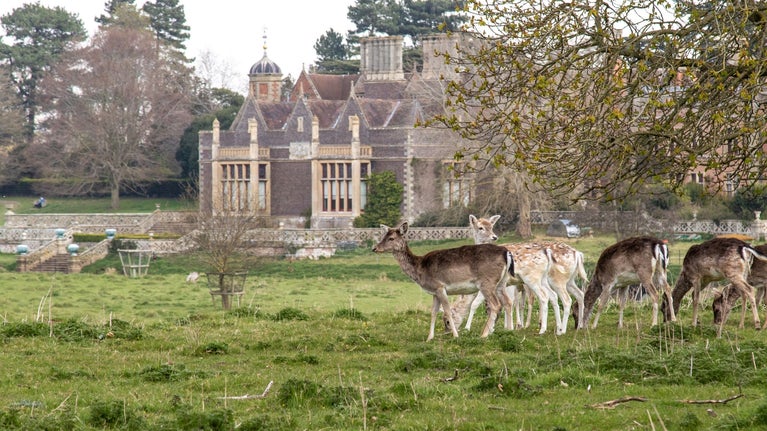
Status symbol, hunting ground, timber source – since the Middle Ages, deer parks have played host to aristocratic pursuits at castles and great residences. Some of the deer parks in our care have herds that date back over 500 years. Today, only a handful remain but they tell a story of the power and privilege that came with enclosing land for private use.
Deer parks gained popularity in Britain after the Norman Conquest of the 11th century. Most parks were created between 1200 and 1350.
It is estimated that there were once over 3,000 deer parks across England, Scotland and Wales. These varied greatly in size, from several to thousands of acres. Today, only a handful remain, yet documentary evidence and boundary earthworks continue to provide evidence of now-lost parks.
Deer parks were a prominent feature of the British landscape until the English Civil War, when they were either broken up and converted into agricultural land or incorporated into post-medieval country estates.
Creating a park was an elite privilege, and many lords obtained royal permission in the form of a licence to empark. Enclosing a park was a costly, time-consuming and disruptive process. Designed to keep intruders out and animals in, park boundaries usually comprised inner ditches and outer banks surmounted by a palisade or wall.
While in the earlier Middle Ages parks were often distanced from their associated houses, the later medieval aristocracy preferred parks that were next to or encompassed their residences. By reserving large areas of land for their own use, elites made conspicuous statements of their lordly privileges to others.
Parks were multi-functional spaces. They were primarily used for hunting, and also provided food and resources for building and fuel. They usually contained a mixture of woodland and grazing pasture, and included features such as fishponds, rabbit warrens and hunting lodges.
The hunt was an aristocratic pastime, which showcased the lord’s wealth and hospitality. Game was enjoyed during feasts and was gifted between elites to consolidate alliances. The hunt also inspired the interior decoration of residences, with medieval and Tudor tapestries often displaying hunting scenes.
The magnificent plaster frieze at Hardwick Hall was made in around 1600, and depicts the court of the goddess Diana surrounded by scenes of deer and boar hunting.

Deer parks have long interested historians and remain a vibrant topic of scholarly discussion. Researchers continue to debate everything from their ecology and economics to their function as status symbols and settings for lordly residences.
Although they are traditionally considered male spaces, recent research has explored women’s creation and use of deer parks. Advancements in archaeological and scientific techniques also continue to shed new light on their form and function. The study of deer parks thus continues to inform, shape and even challenge our perceptions of life in medieval and early modern Britain.
There has been a deer park at Charlecote since the 16th century. Although no documentary evidence can be found, it’s a popular rumour that a young William Shakespeare was once apprehended for poaching in the park in the early 1580s.
A magnificent herd of fallow deer have called Petworth Park home for over 500 years, and were reportedly hunted by Henry VIII on his visit to the house in the 1500s. The park was transformed in the 1750s and early 1760s by Lancelot ‘Capability’ Brown, and is one of the finest surviving examples of English landscape design.
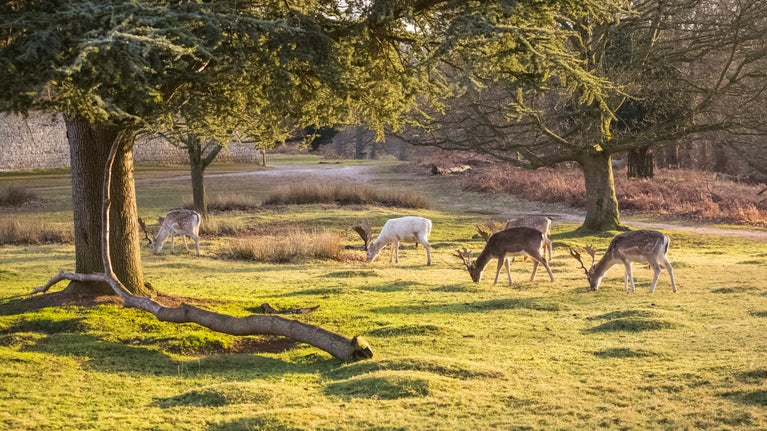
The park at Knole was first enclosed in 1456. Its 1,000 acres have been home to the same fallow deer herd since at least the 15th century and home to some Japanese sika deer since the 1890s.
This article was written by Rachel Delman, a historian whose research explores residences that were commissioned and headed by high-status women in late medieval and early Tudor England. Her work considers how female authority was expressed through the design, layout and use of the great residence and its wider landscape.

Find out more about the historical landscapes that the talented garden teams work hard to conserve at the places you love to visit.
Dunham Massey's deer park is an historic parkland and naturally spacious place to visit. Walk along the leafy avenues and admire the far-reaching views while getting a breath of fresh air.
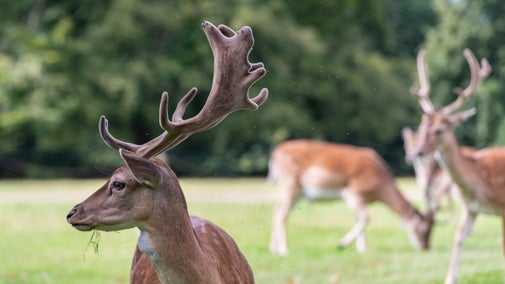
Knole’s parkland is home to a herd of fallow deer and it’s important to us that everyone has the best experience possible, so here are some dos and don’ts.
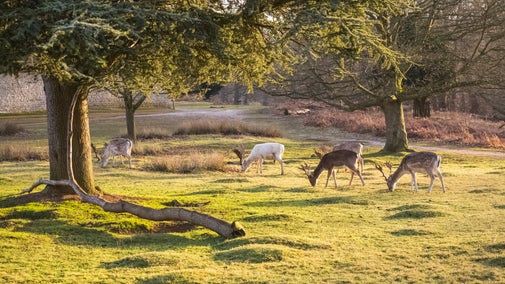
Deer management at Fountains Abbey and Studley Royal is an essential part of the work the team does. Read on to learn about the National Trust’s position on deer management.

Every autumn, drama unfolds as male deer lock antlers in competition for females. Find out where you can visit during deer rutting season to see one of nature's annual spectacles.
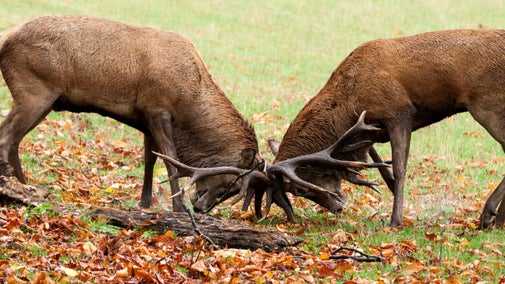
Find out about fallow, red and muntjac deer, how to tell them apart and other top tips for seeing and photographing them at the places we care for.

Find out more about our Trusted Source articles, which were created in partnership with the University of Oxford, and explore topics related to the special places in our care.
